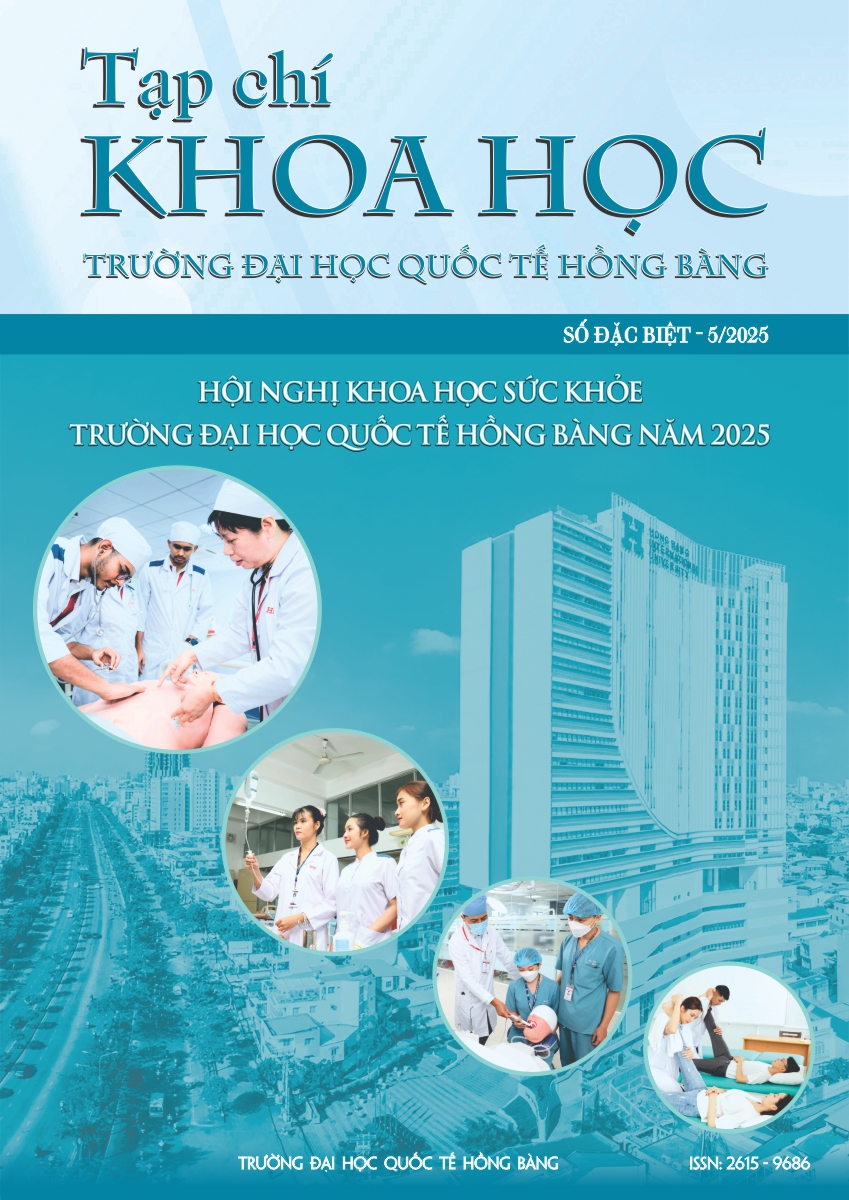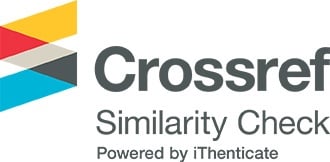KỸ THUẬT LẤY DẤU PHỤC HÌNH RĂNG THÁO LẮP TRONG KỶ NGUYÊN SỐ
Các tác giả
DOI: https://doi.org/10.59294/HIUJS.KHSK.2025.011Từ khóa:
lấy dấu kỹ thuật số, máy quét trong miệng, phục hình răng tháo lắp bán phần, phục hình răng tháo lắp toàn phầnTóm tắt
Đặt vấn đề: Công nghệ số đang tạo ra những thay đổi quan trọng trong nha khoa, đặc biệt là phục hình răng tháo lắp. Phương pháp lấy dấu truyền thống vẫn được sử dụng phổ biến nhưng có nhiều hạn chế như sai số tích lũy, phụ thuộc vào tay nghề bác sĩ và gây khó chịu cho bệnh nhân. Sự ra đời của kỹ thuậtấy dấu kỹ thuật số bằng máy quét trong miệng (IOS) mang đến nhiều cải tiến, giúp nâng cao độ chính xác, rút ngắn thời gian điều trị và cải thiện trải nghiệm của bệnh nhân. Phương pháp nghiên cứu: Tổng quan tài liệu nhằm đánh giá độ chính xác của IOS so với kỹ thuật lấy dấu truyền thống. Kết quả: IOS cho thấy độ chính xác cao hơn so với phương pháp lấy dấu truyền thống trong các trường hợp mất răng loại III/IV (phân loại Kennedy). Tuy nhiên, ở mất răng loại I/II, độ chính xác của IOS giảm dần khi khoảng mất răng dài hơn. Đặc biệt, trong mất răng toàn hàm, IOS còn hạn chế khi ghi nhận mô mềm và vùng di động. Kết luận: IOS đang tiếp tục phát triển giúp tối ưu hóa quy trình phục hình, cá nhân hóa điều trị và dần thay thế lấy dấu truyền thống trong phục hình răng tháo lắp, góp phần hiện đại hóa nha khoa phục hồi.
Abstract
Background: Digital technology is driving significant changes in dentistry, particularly in removable prosthodontics. Traditional impression techniques remain widely used but have several limitations, including cumulative errors, operator dependency, and patient discomfort. The introduction of intraoral scanning (IOS) as a digital impression technique brings several advancements, enhancing accuracy, reducing treatment time, and improving the patient experience. Research methods: This study was conducted as a literature review, focusing on the accuracy of IOS compared to traditional impression techniques. Results: IOS demonstrates higher accuracy than traditional impression methods in partially edentulous cases classified as Kennedy Class III or IV. However, in Kennedy Class I/II cases, its accuracy decreases as the edentulous span lengthens. Particularly in fully edentulous cases, IOS still faces limitations in capturing soft tissue dynamics and displaceable tissues. Conclusion: IOS continues to evolve, optimizing prosthetic workflows, personalizing treatment, and gradually replacing traditional impression techniques in removable prosthodontics, contributing to the modernization of restorative dentistry.
Tài liệu tham khảo
[1] Y. Wang, Y. Li, S. Liang,…, Y. Zhou, “The accuracy of intraoral scan in obtaining digital impressions of edentulous arches: a systematic review,” The journal of evidence-based dental practice, 24, 1, 2024. DOI: 10.1016/j.jebdp.2023.101933.
DOI: https://doi.org/10.1016/j.jebdp.2023.101933[2] K. Fueki, Y. Inamochi, Y.Arai,…, N. Wakabayashi, “A systematic review of digital removable partial dentures. Part I: Clinical evidence, digital impression, and maxillomandibular relationship record,” Journal of Prosthodontic Research, 66(1): 40-52, 2021. DOI: 10.2186/jpr.JPR_D_20_00116.
DOI: https://doi.org/10.2186/jpr.JPR_D_20_00116[3] G. Srivastava, S. Padhiary, N. Mohanty, P.M. Mourelle and N. Chebib, “Accuracy of Intraoral Scanner for Recording Completely Edentulous Arches - A Systematic Review,” Dentistry journal, 11, 241, 2023. DOI: 10.3390/dj11100241.
DOI: https://doi.org/10.3390/dj11100241[4] S. Jung, C. Park, H.S. Yang,…, S.W. Park, “Comparison of different impression techniques for edentulous jaws using three-dimensional analysis,” The Journal of Advanced Prosthodontics, 11:179-86, 2019. DOI: 10.4047/jap.2019.11.3.179.
DOI: https://doi.org/10.4047/jap.2019.11.3.179[5] J.E. Kim, A. Amelya, Y. Shin and J.S. Shim, “Accuracy of intraoral digital impressions using an artificial landmark,” The journal of prosthetic dentistry, 117(6):755-761, 2017.
DOI: https://doi.org/10.1016/j.prosdent.2016.09.016[6] R. Sorrentino, G. Ruggiero, R. Leone, M. Ferrari and F. Zarone, “Area accuracy gradient and artificial markers: a three-dimensional analysis of the accuracy of IOS scans on the completely edentulous upper jaw,” Journal of osseointegration, 13(4):S257-S264, 2021. DOI: 10.23805/JO.2021.13.S04.1.
[7] F.Z. Jamjoom, A. Aldghim, O. Aldibasi and B. Yilmaz, “Impact of intraoral scanner, scanning strategy, and scanned arch on the scan accuracy of edentulous arches: An in vitro study”, The journal of prosthetic dentistry, 131:1218-25, 2024. DOI: 10.1016/j.prosdent.2023.01.027.
DOI: https://doi.org/10.1016/j.prosdent.2023.01.027[8] F. Zarone, G. Ruggiero, M. Ferrari,…, R. Sorrentino, “Accuracy of a chairside intraoral scanner compared with a laboratory scanner for the completely edentulous maxilla: An in vitro 3-dimensional comparative analysis”, The journal of prosthetic dentistry, 124, 6, 2020. DOI: 10.1016/j.prosdent.2020.07.018.
DOI: https://doi.org/10.1016/j.prosdent.2020.07.018[9] H. Hayama, K. Fueki, J. Wadachi and N. Wakabayashi, “Trueness and precision of digital impressions obtained using an intraoral scanner with different head size in the partially edentulous mandible”, Journal of Prosthodontic Research, 454, 6, 2018. DOI: 10.1016/j.jpor.2018.01.003.
DOI: https://doi.org/10.1016/j.jpor.2018.01.003[10] J.H. Lee, J.H. Yun, J.S. Han, I.S.L. Yeo and H.I. Yoon, “Repeatability of Intraoral Scanners for Complete Arch Scan of Partially Edentulous Dentitions: An In Vitro Study”, Journal of clinical medicine, 8, 1187, 2019. DOI:10.3390/jcm8081187.
DOI: https://doi.org/10.3390/jcm8081187[11] K.Q.A. Hamad and F.T.A. Kaff, “Trueness of intraoral scanning of edentulous arches: A comparative clinical study”, Journal of Prosthodontics, 1-6, 2022. DOI: 10.1111/jopr.13597.
DOI: https://doi.org/10.1111/jopr.13597[12] M.A. Alkhodary, “Optical versus conventional impressions of the completely edentulous arches”, Egyptian dental journal, 67, 1407-1415, 2021, DOI: 10.21608/edj.2021.51559.1369.
DOI: https://doi.org/10.21608/edj.2021.51559.1369[13] N. Chebib, N. Kalberer, M. Srinivasan,…, F. Müller, “Edentulous jaw impression techniques: An in vivo comparison of trueness”, The journal of prosthetic dentistry, 2018. DOI: 10.1016/j.prosdent.2018.08.016.
DOI: https://doi.org/10.1016/j.prosdent.2018.08.016[14] L.L. Russo, G. Caradonna, G. Troiano,…, D. Ciavarella, “Three-dimensional differences between intraoral scans and conventional impressions of edentulous jaws: A clinical study”, The journal of prosthetic dentistry, 2019. DOI: 10.1016/j.prosdent.2019.04.004.
DOI: https://doi.org/10.1016/j.prosdent.2019.04.004[15] G. Hack, L. Liberman, K. Vach,…, S.B.M. Patzelt, “Computerized optical impression making of edentulous jaws - An in vivo feasibility study”, Journal of Prosthodontic Research, 64, 444-453, 2020. DOI: 10.1016/j.jpor.2019.12.003.
DOI: https://doi.org/10.1016/j.jpor.2019.12.003Tải xuống
Tải xuống: 98











